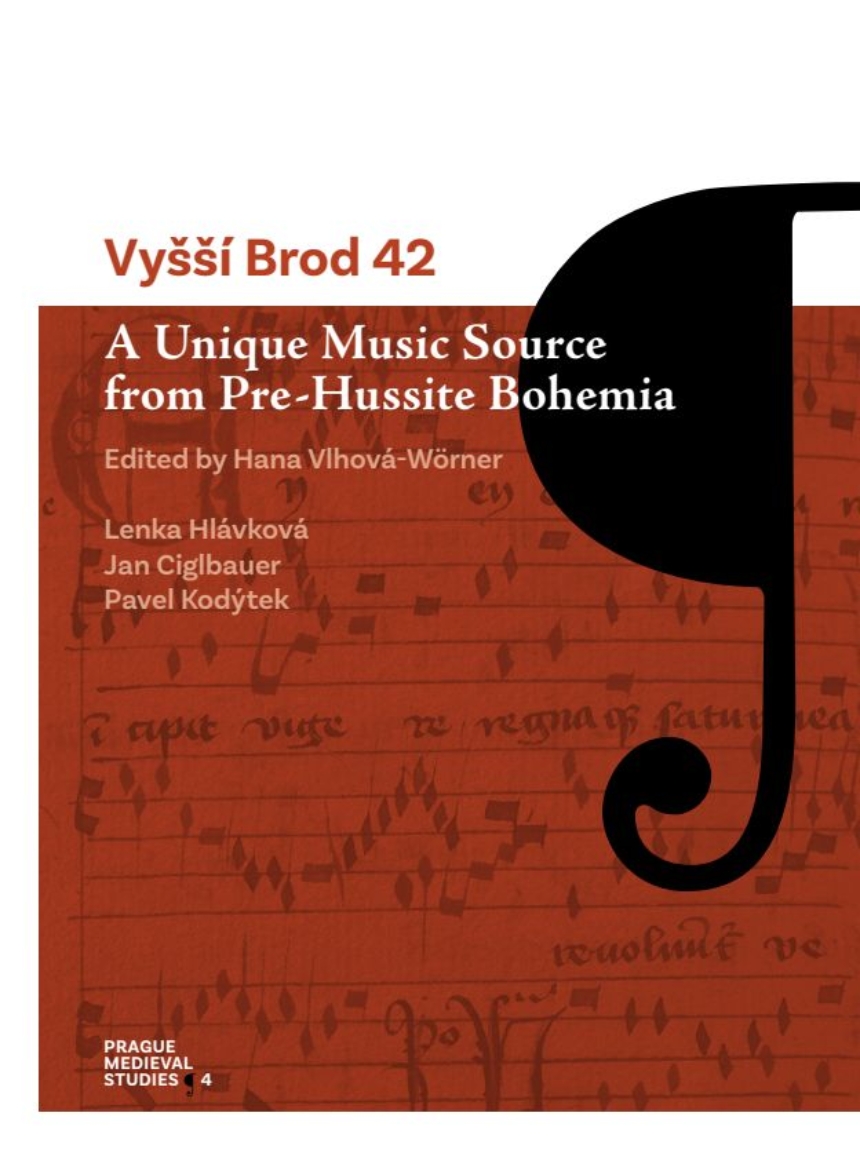9788024659589
Distributed for Karolinum Press, Charles University
Vyšší Brod 42
A Unique Music Source from Pre-Hussite Bohemia
An in-depth study of a medieval manuscript of songs from the Cistercian monastery in Vyšší Brod.
Manuscript 42 from the Cistercian monastery in Vyšší Brod (Hohenfurth), Czech Republic, compiled in 1410, today represents one of the most important music sources from medieval Bohemia, providing insight into the rich and varied liturgical and devotional repertory circulating in Central Europe just before the outbreak of the Hussite Wars in 1419. The manuscript’s collection of monophonic and polyphonic songs, one of the oldest ones in Europe, serves as a starting point for studies of the Latin mensural cantio, an important late medieval music form and cultural phenomenon.
In Vyšší Brod 42, three extensive studies explore various aspects of the manuscript and its contents. In the first, Jan Ciglbauer examines its creation process and the involvement of various scribes in noting down new texts and melodies. In the second, Hana Vlhová-Wörner delves into the variety of late medieval chant compositions contained within it and the relationship of this truly novel repertory to the formalized Cistercian liturgy. The last chapter, co-authored by Lenka Hlávková and Pavel Kodýtek, scrutinizes the manuscript’s remarkable collection of spiritual songs and identifies their inscription as “snapshots” of a vivid oral tradition.
Together, these three studies bring a new perspective on musical life in Cistercian monasteries in Central Europe in the late Middle Ages, a topic that has received very little exploration until now.
Manuscript 42 from the Cistercian monastery in Vyšší Brod (Hohenfurth), Czech Republic, compiled in 1410, today represents one of the most important music sources from medieval Bohemia, providing insight into the rich and varied liturgical and devotional repertory circulating in Central Europe just before the outbreak of the Hussite Wars in 1419. The manuscript’s collection of monophonic and polyphonic songs, one of the oldest ones in Europe, serves as a starting point for studies of the Latin mensural cantio, an important late medieval music form and cultural phenomenon.
In Vyšší Brod 42, three extensive studies explore various aspects of the manuscript and its contents. In the first, Jan Ciglbauer examines its creation process and the involvement of various scribes in noting down new texts and melodies. In the second, Hana Vlhová-Wörner delves into the variety of late medieval chant compositions contained within it and the relationship of this truly novel repertory to the formalized Cistercian liturgy. The last chapter, co-authored by Lenka Hlávková and Pavel Kodýtek, scrutinizes the manuscript’s remarkable collection of spiritual songs and identifies their inscription as “snapshots” of a vivid oral tradition.
Together, these three studies bring a new perspective on musical life in Cistercian monasteries in Central Europe in the late Middle Ages, a topic that has received very little exploration until now.
298 pages | 8 color plates, 14 halftones, 38 figures, 19 tables, 22 musical examples | 6.5 x 8.86 | © 2025
Music: General Music
Reviews
Table of Contents
1. The Scribe(s), Genesis, and Use of the Manuscript Vyšší Brod 42
1.1 Introduction
1.2 Musical and liturgical culture at the Vyšší Brod abbey
1.3 Manuscript description
1.4 Genesis of VB 42
1.5 The identity of Przybico
1.6 Conclusion
1.7 Codicological structure of VB 42
2. Secundum morem nostrum and secundum morem secularem: the Liturgical Repertory in the Manuscript Vyšší Brod 42
2.1 The liturgical repertory of VB 42: description of the contents
2.2 Interpretations and hypotheses
3. Manuscript Vyšší Brod 42: a New Perspective on the Tradition of Late Medieval Cantiones
3.1 The cantio in current discourse and VB 42
3.2 Songs, scribes, and notation in VB 42
3.3 Oral transmission of cantiones
3.4 Conclusion
4. Abbreviations
5. List of Sources
6. Bibliography
7. Index
1.1 Introduction
1.2 Musical and liturgical culture at the Vyšší Brod abbey
1.3 Manuscript description
1.4 Genesis of VB 42
1.5 The identity of Przybico
1.6 Conclusion
1.7 Codicological structure of VB 42
2. Secundum morem nostrum and secundum morem secularem: the Liturgical Repertory in the Manuscript Vyšší Brod 42
2.1 The liturgical repertory of VB 42: description of the contents
2.2 Interpretations and hypotheses
3. Manuscript Vyšší Brod 42: a New Perspective on the Tradition of Late Medieval Cantiones
3.1 The cantio in current discourse and VB 42
3.2 Songs, scribes, and notation in VB 42
3.3 Oral transmission of cantiones
3.4 Conclusion
4. Abbreviations
5. List of Sources
6. Bibliography
7. Index

